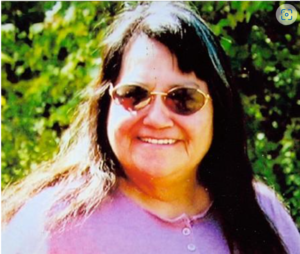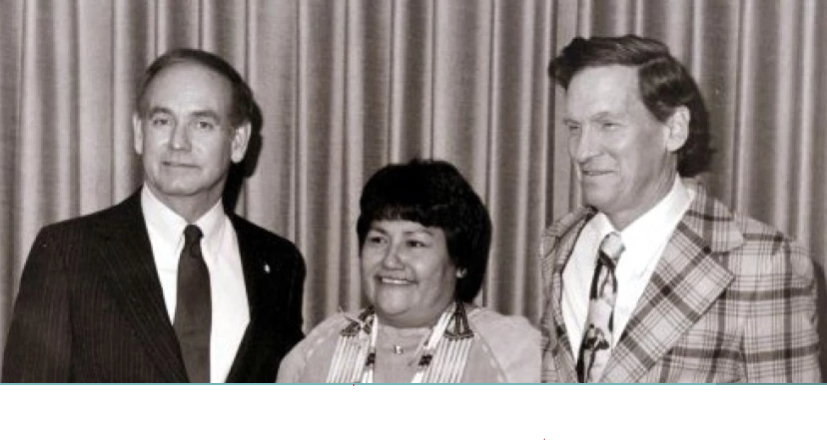Maria Darlene Pearson: An Advocate For Iowa's Indigenous People
By Mary Weaver

Maria Darlene Pearson or Hai-Mecha Eunka, translated as Running Moccasins, was born July 12, 1932, in Springfield, South Dakota, though she lived most of her life in Iowa. A member of the Turtle Clan of the Yankton Sioux she was the primary catalyst for the creation of the Native America Graves Protection and Repatriation Act (NAGPRA). Her actions led to her being called “the Founding Mother of the modern Indian repatriation movement”.
Her parents, Joseph Luther Oscar Drappeaux and Winifred May Keeler Drappeaux, gave her the name Darlene Elvira Drappeaux. Although Maria attended public and parochial schools, she was educated in Yankton customs and traditions by her grandmother.
In 1969 Maria was married to John Pearson, who was an engineer for the Iowa State Highway Commission. She learned from John that while construction was being completed in1971 for Interstate 20 near Glenwood, Iowa, the skeletal remains of 26 white settlers were identified and quickly reburied. During the same construction, the remains of a Native American woman and her infant were sent to the office of the State Archaeologist in Iowa City.
Maria was furious, remembering the values and traditions taught by her Grandmother, regarding her native religion. A religion that holds that the past and present are one and that a person’s spirit abides with their remains. When those remains are disturbed, their spirits grow unsettled and unhappy.
Learning of this incident, Maria was appalled that the skeletal remains of Native Americans were treated differently from white remains. Pearson dressed in traditional Native American apparel staged a protest in the State Capitol and finally gained an audience with Governor, Robert D. Ray.
When Governor Ray asked what he could do for her, she responded, “You can give me back my people’s bones and you can quit digging them up.”
The Native American and her infant were subsequently reburied alongside the remains of the Whites.
Mary Young-Bear, an acquaintance of Maria recalls her “as a strong, warm-hearted woman with a quick sense of humor”. Mary also wrote, “I was also aware of her strong Lakota belief system. Whenever I think of her, I see her smile and hear her laugh”.
Maria continued to meet with legislators, archaeologists, anthropologists, physical anthropologists, as well as other tribal leaders. Her activism led to the Iowa Burials Protection Act of 1976, the first of its kind in the United States. This law mandated that legal protection of burials in Iowa extended to ancient burial grounds, unmarked cemeteries, and Native remains. It also established four cemeteries for Indigenous reburials.
Emboldened by her success, Pearson went on to lobby national leaders, and was one of the catalysts for the creation of the Native American Graves Protection and Repatriation Act, in 1990.
Pearson occupied several important positions in the state of Iowa. She chaired the Indian Advisory Council of the Office of the State Archaeologist of Iowa and served as the governor’s Liaison for Indian Affairs. Additionally, she acted as an advisor on Indian health and rights for the Iowa state legislature, Iowa Lutheran and Methodist churches, and multiple universities. Pearson’s outreach to the American Indian community extended to other issues, including alcoholism and substance abuse.
She became a spokesperson and political leader on behalf of the Native peoples. She was also a tribal elder, a position of high regard and equally high responsibility among her people.
Her work was featured in the 1995 BBC documentary Bones of Contention. Maria was also nominated twice for a Nobel Peace Prize for her substantial contributions toward the protection and repatriation of Native American remains.
Pearson had six children: Robert, Michael, Eldon, Ronald, Richard, and Darlene and 21 grandchildren and 15 great grandchildren. Pearson died in Ames, Iowa, May 23, 2003, at the age of 70.

Maria with Governor Ray